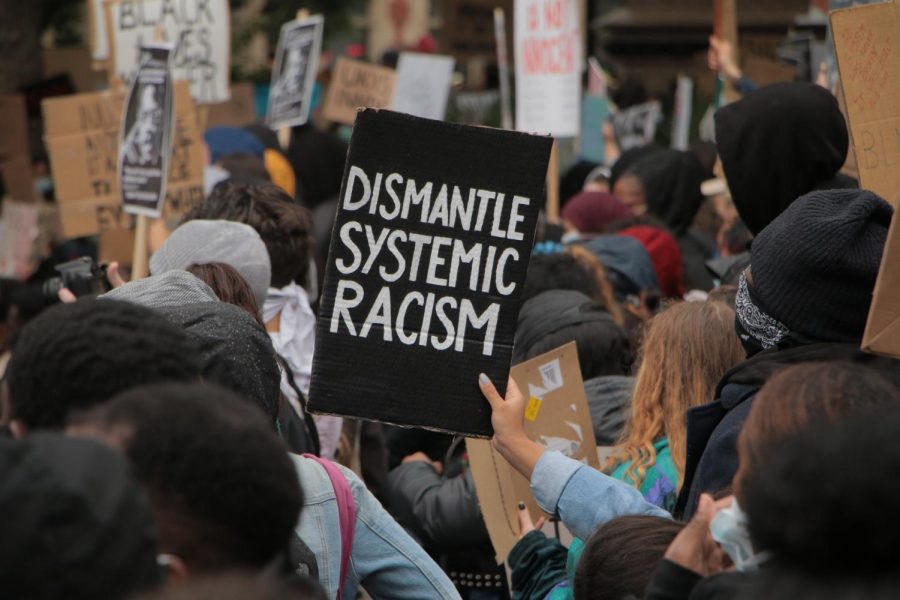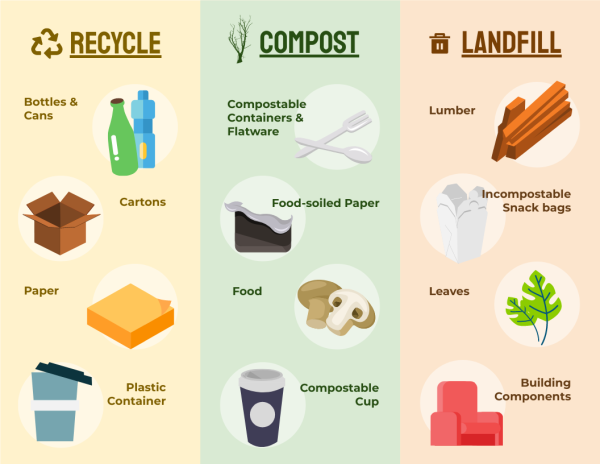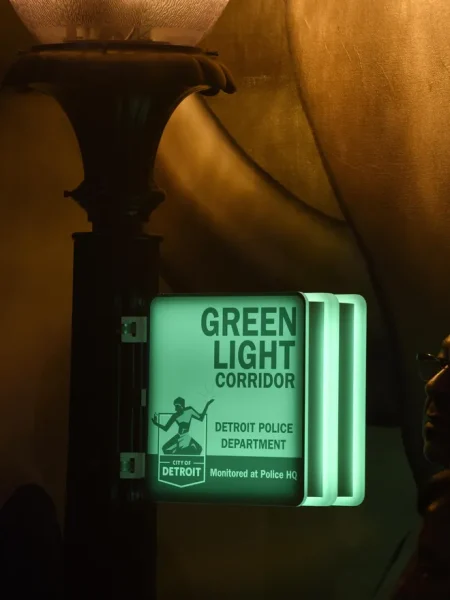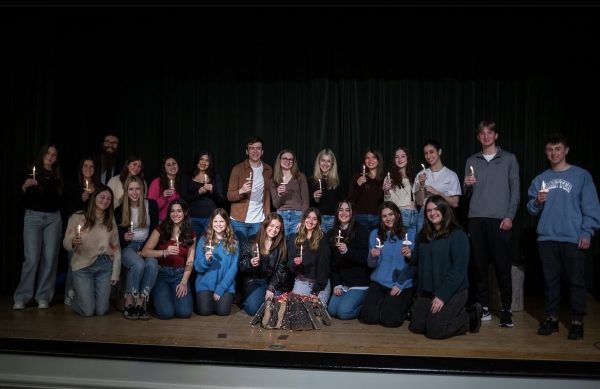Systemic Racism: Americas Long Overdue Issues
A protest is being demonstrated in the attempt to dismantle systemic racism.
Systemic racism. These two words are constantly heard on the news and talked about by government officials and political activists, but what do they really mean? What is the true monster hiding behind the curtain called systemic racism? The answer is both sad, as well as fairly simple. It’s the oppression that comes from our nation’s racism that continues to go through our country’s various invisible systems. Frederick Douglass once said, “The happiness of the white man cannot be purchased by the oppression of the black man.” Yet here we are in 2020, and as sad as it is, the black man is still being oppressed.
Civil rights leader, Martin Luther King Jr., once said, “I never intend to adjust myself to an economy that takes necessities from the majority and gives riches to the few.” But the same economic oppression that was relevant in the 60’s is still around and active in 2020. In order to reform economic oppression, people have to know where it started and why it became such a widespread problem in our nation. You may or may not have heard that America was built on the backs of slaves. This is no political opinion, it is a historical fact. African Americans were the currency of our nation for centuries. It wasn’t until after slaves were made into free men and women that economic problems really commenced. Even though black people were legally free on paper, this was not the case in reality due to the nonexistent enforcement of the supposed equality stated in the 13th amendment. After the Civil War, many laws were passed that encouraged sharecropping. Sharecropping was little better than slavery for no income was allowed to be made from back-breaking labor. The owners (almost always former plantation owners) would tax every piece of equipment, food, or clothing used to successfully produce crops or other produce, and then they would take it all away leaving just enough resources for their workers to produce their product. Because share-cropping forces the workers to go into debt so quickly, sharecropping has been seen by African Americans as a slightly modified version of slavery. But because of the laws passed that essentially forced many African Americans to go into this practice, very few could successfully escape this depressing life. These laws, commonly known as Jim Crow laws, also discouraged seeking labor elsewhere, or else risking arrest or worse punishments. Fast forward to the Civil Rights movement in the 60’s, you see the same problem. Even in today’s day in 2020, you still see African Americans struggling to advance their standing in this nation’s economy. According to Congress’s Joint Economic Committee, white families’ median wealth is 171,000 dollars. This is ten times greater than the median wealth held by black families which is only 17,000 dollars. You can only get such a vast difference in wealth from many generations of Americans either consciously or unconsciously allowing for such unjust systems to run throughout our country.
It is a very sad reflection of our country when I could be physically harassed or worse and know in that moment that the chances of me receiving true justice in the courts is slim, all because of my ethnicity.
— Derius Hallman
Martha Waller, a long time Detroit resident, talks about how she has seen economic oppression be put upon the African American community over the decades. She stated, “I remember very vividly when many of the city’s workers were offered homes in the suburbs, leaving mainly just African Americans in many parts of the city of Detroit.” This is significant because when white city workers moved to the suburbs, this left African Americans as the majority of renters and homeowners in Detroit. In fact, just going back to the 60’s you see that the white population made up 70% of the total Detroit population. In contrast, the black population only made up 28%. Fast forward to just ten years ago in 2010 you see the tables have completely flipped. Now the black population makes up 82% of the total population and the white population only makes up 10%. Due to how people viewed majority-black neighborhoods, the property value started to depreciate, which caused a rise in crime. “This went on until Dan Gilbert and other wealthy people started to invest in the city. But even with these investments, gentrification is another problem that has begun to rise. People of color who once owned many of the homes in some of the now very rich neighborhoods in Detroit have been sold to white families from the suburbs who want to be part of the newly renovated Detroit,” Waller says. Many barriers have been put up against not just African Americans but all communities of color. The Latino community has also faced similar challenges, not just in Metro Detroit, but around the nation. When asked what she thought was the best first step in eradicating economic oppression in the Metro Detroit area, Waller answered, “We need to form a coalition between all communities of color and let everyone know that our community will not stand for unequal economic treatment. We need to demand change in all of our communities.”
people definitely need to be educated on the matter and understand it’s real, it’s deep and very systemic.
— Derius Hallman
Unfortunately, our nation’s economy is not the only system full of injustice and inequality. Nationally, we continue to see a problem in the way our courts and justice departments treat people of color. The long and terrible relationship between African Americans and the courts has been around for an extended amount of time. Although there was never any real positive relationship from the start of our nation, the injustice put upon African Americans by the courts really heated up when the supreme court ruled over the Scott vs. Sanford case in 1857. The case ruled that African Americans were not among “the people” and had no right to be free citizens of this country. This was the beginning of a still void relationship that the African American community has with our nation’s courts. As a community that is constantly being outwardly afflicted by hate and violence, we look to the courts to ensure we get the justice we deserve. But for people of color, it almost never happens. George Floyd, Amuad Arbery, Breonna Taylor, unfortunately, weren’t the first to experience death because of racism, and receive barely any justice from their untimely deaths. Before them, you would hear about the deaths of kids like Trayvon Martin, a kid whose only crime was wearing a hood after buying some skittles from a gas station. When heinous crimes like these are committed, it is disturbing that there is such a lack of justice because of skin color. Murder is murder. But all too often, justice is not delivered and the offender, who is commonly a white male, is let off by a predominantly white court. While talking to Berkley High School sophomore Derius Hallman about the matter, he stated, “It is a very sad reflection of our country when I could be physically harassed or worse and know in that moment that the chances of me receiving true justice in the courts is slim, all because of my ethnicity.” Hallman is not alone in this belief. Most African Americans are not shocked at how the nation’s justice departments and court systems treat them, but can’t help but be saddened by these dark realities and hope for a brighter tomorrow. When I asked Hallman what he thought others could do to contribute to eradicating systemic racism he said, “people definitely need to be educated on the matter and understand it’s real, it’s deep and very systemic.”
Systemic racism is not going away anytime soon, but if we work together and address the various systems that it goes through, then we might be able to create a better America. An America where all are seen as equal before their fellow American citizens, as well as before the law.

Hi everybody! My name is Donovan Fobbs, and I have the pleasure of being this year's editor in chief. I’m going to be a senior this year, and this...












